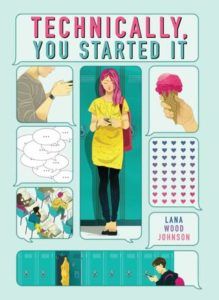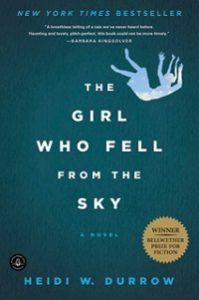
Finding Diversity On the Page as a New YA Reader
I have always been one of those readers who says read what you love and don’t apologize for it. Do you like horror? Get your scare on. Romance? Embrace the bodice rippers. True crime? Really not my bag but you do you boo boo. However, there is one that has recently woven its way into my heart and firmly found a permanent home there.
YA.
For awhile, I avoided it, erroneously believing that I was too old for it. I’ve since determined that you’re never too old for the things you enjoy and have truly embraced my fondness for YA. Most of my current adoration for the category is all the developments that have been made for it since I became the target audience, and it all comes down to one word: diversity. There is so much more of it in today’s YA books and it’s not just relegated to race or ethnicity.

Growing up biracial, there weren’t a lot of girls that looked like me in the books I read. While I enjoyed reading The Baby-Sitter’s Club, as well as the various Sweet Valley and other serialized series fiction that saturated the shelves during the ’90s, the harsh truth is that they very rarely had people of color in them. Even if they did, it was limited, they were totally the token characters (sorry BSC Claudia and Jessi but I’m looking at you), and they were almost never mixed. And while there were PoCs in Stoneybrook, there were almost none to be found in Sweet Valley. Even Stoneybrook’s Jessi and Claudia were each the only one of their ethnicities in the town. To be blunt, there was no way in hell that an interracial family would have been accepted in either suburb because it wouldn’t have been accepted in the books at that time.
Even in “higher” literary circles mixed people were given the short end of the archetype stick by being cast as the “Tragic Mulatto,” probably best identified in the main character in the 1949 movie Pinky. These characters were ones who were always at the epicenter of some terrible identity crisis either trying to pass as white, or breaking down mentally since they couldn’t handle what they were. The definition of mulatto is doubly insulting with what it represents, although the same can be said for all racial slurs. Needless to say this was not very encouraging to see growing up, and later in my college literature classes. With there being so many more options out there, the reading youth of today can pretty much throw the proverbial rock in a bookstore and land on a book where they can find a likable and non-stereotypical character that they identify with.

Truth be told, I’m jealous of the young book dragons of today because they have so much to choose from. While I still appreciate and have fond memories of what I read growing up and will even occasionally reread them, they aren’t without their problematic themes. I live vicariously through the YA of today, because I know that if I had these options as a young bookish person, there are many parts of my life that may have been more than a touch easier for me. There would have been a fictional character that I could relate to. Critics of this change in the genre likely feel that it’s too much and that it is catering to a specific group just to sell books, and everyone is entitled to their opinion.
However, these naysayers are also probably from a group that has never ever been marginalized. They probably have never felt unheard in any aspect of their lives. They’ve probably never have had to read a book, either assigned or recreationally, where there wasn’t always at least one person painted in a positive light that looked and acted like them that they could identify with. They don’t know how joyous it is for us who have had, at one time or another, had to check the “Other” box to finally see ourselves in popular fiction or what a wonderful feeling it is to be more than the token PoC, or sassy gay friend. They don’t know what it’s like to have a story focused on a character that looks like you where you don’t end up in a gang, hooked on drugs, or dead. So to them I politely say sit down, be quiet, and let us have our moment. We finally have a friend in a book to walk along the early, sometimes tumultuous, sometimes awkward path of those formative years with us.













